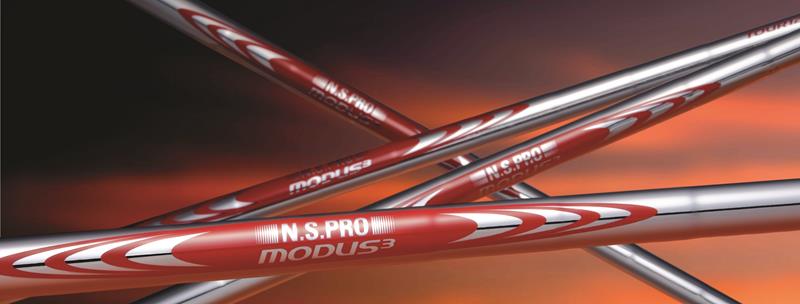It is obvious that winning golf tournaments and championships are important in golf equipment sales and marketing. Although, I really understand why is it important to Nippon Shaft to highlight how many tour players are playing with their shafts, but they have to do more to gain awareness and preference among golfers (below the picture I will detail my ideas).
A couple of years ago Nippon Shaft made a strategic decision to design and manufacture shaft for players at the highest level. At the same time, we should not forget that only 20% of the golfers are using either graphite, titanium or specialty grade steel shafts.
Professional tour golfers play one of the four Nippon Shaft PRO MODUS³ Tour models ( Nippon Shaft PRO 950GH, the Nippon Shaft PRO MODUS3 Tour 130, Nippon Shaft PRO MODUS3 Tour 120, Nippon Shaft PRO MODUS3 TOUR 105 shaft, and Nippon Shaft PRO MODUS3 PROTOTYPE ORA steel shafts.). In 2015, 106 players on the PGA TOUR and European Tour combined
In 2015, 106 players on the PGA Tour and European Tour combined utilizing steel shafts built by the Japan-based golf shaft manufacturer. This is a 66% increase versus 2014. Nippon Shaft is still the preferred shaft on the LPGA.

However, to turn golfers to be conscious consumers (not just in terms of brand preference) is the biggest challenge for golf shaft manufacturers. I’ve got an impression that when we are talking about golf clubs we tend to pay less attention to golf shafts (or neglect?) and more to other parts of the golf club.
Is this because we don’t understand the importance/essence of certain technology innovation? If this is the case, how companies like Nippon Shaft utilize content marketing (e.g. interactive content (more than just white papers), usage of visual mediums, infographics) to educate golfers about its shafts and generate more sales in 2016?
Building our own, useful content destination for our audience will gain momentum in 2016! GE’s GE Reports is a brilliant example how to create a useful content hub/destination. On this website, GE is targeting engineers and stakeholders. They distribute their content via emails, Tumblr, Twitter and Facebook, but the traffic mainly comes via organic search results. Another great B2B content marketing example is Hubspot, where you can get valuable and useful best practices in exchange for your contact information (=lead generation).
The investment in content marketing has kept growing in the last couple of years. Content Marketing Institute found that companies will allocate 32% of their marketing budget in 2016 to content marketing. (in 2015: 25%).
Have something to add to this story? Share it in the comments!
